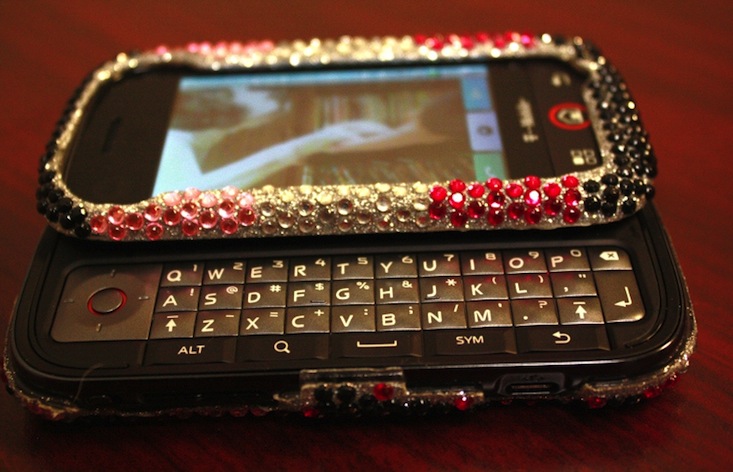Parham Aarabi is a professor at the University of Toronto and CEO of ModiFace. We’ll be talking about mobile user experience and more at VentureBeat MobileBeat conference in San Francisco, Calif. July 9-10.
It’s the one thing that we do most on mobile devices that often is the most annoying: typing. With so many different kinds of mobile keyboards, and perhaps a pending keyboard redesign from Apple debuting next week (or at least an announcement allowing third-party keyboards), it’s a good time to consider some recent (and a few not-so-recent) advances in mobile keyboard interfaces.
Intelligent Keyboards
AI Weekly
The must-read newsletter for AI and Big Data industry written by Khari Johnson, Kyle Wiggers, and Seth Colaner.
Included with VentureBeat Insider and VentureBeat VIP memberships.
Over the past few years, several unique keyboard interfaces have garnered significant attention and popularity. Swype, acquired by Nuance in 2011, is one such example, where users type by either touching the keys as usual or by making continuous touch gestures that cover the letters of a word. The result is surprisingly robust and user friendly (side note: this is the keyboard I personally use). There are other options, such as the Fleksy keyboard by Syntellia, or the Minuum flattened keyboard by Whirlscape, as well as SwiftKey, a very popular keyboard that is similar to Swype. The “magic” with these keyboards is that they assume user touches have a spatial error (or in the case of Swype and SwiftKey, a gestural error), and account for this when finding the most probable word. In almost all cases, these intelligent keyboards work better than their traditional counterparts. In the case of Minuum, there is an added benefit that the keyboard takes up very little space on the screen.
Dynamic Keyboards
Although not mainstream, there has been work in the area of keyboards that dynamically change based on what letters are most probable. In the simplest context, this could be visualized as a keyboard where the size of the individual keys are scaled according to the usage frequency of each letter.
A more interesting example is the Dasher keyboard (created by a research group at Cambridge University), where the user types by going through a continuous sequence of dynamically scaled letters (click here to see a quick demo). Although this may not be the fastest way of typing, it works well in situations where multi-finger typing is not possible (such as for Google Glass).
A discussion of dynamic keyboards isn’t complete without mentioning Tactus. Tactus creates physical touchscreen keyboards that can “pop-in” and out dynamically, which gives users a tactile feel for the keys. It remains to be seen whether such an interface will gain mainstream popularity, but it is certainly interesting.
[aditude-amp id="medium1" targeting='{"env":"staging","page_type":"article","post_id":753659,"post_type":"guest","post_chan":"none","tags":null,"ai":false,"category":"none","all_categories":"business,mobile,","session":"A"}']
Beyond Keyboards
There are methods of entering text that may do away with the keyboard altogether. One such example that we have been developing at the University of Toronto is the Extended Touch interface. Here, a user can tap a location on any surface that a mobile device is placed on, and based on the unique vibrations and sounds, we detect the exact location tapped. Although the core tap detection technology works reasonably well, there are several important challenges that will need to be overcome. However, it is possible in the future that such an interface (i.e. typing on any surface) combined with a probabilistic keyboard will make a viable method for text entry.
Parham Aarabi is an Associate Professor of Electrical and Computer Engineering at the University of Toronto, where he teaches a graduate course on Advanced Mobile User Interfaces and directs the Mobile Applications Lab. He received his Ph.D. in Electrical Engineering from Stanford University and was twice selected as a Canada Research Chair. He has been the recipient of MIT’s TR35 “Top Young Innovator” award and the IEEE Mac Van Valkenburg Award. He is also the founder and CEO of ModiFace Inc., the leading provider of virtual face simulation and virtual try-on technology.
Smartphone keyboard image via MoneyBlogNewz/Flickr
[aditude-amp id="medium2" targeting='{"env":"staging","page_type":"article","post_id":753659,"post_type":"guest","post_chan":"none","tags":null,"ai":false,"category":"none","all_categories":"business,mobile,","session":"A"}']
VentureBeat's mission is to be a digital town square for technical decision-makers to gain knowledge about transformative enterprise technology and transact. Learn More

